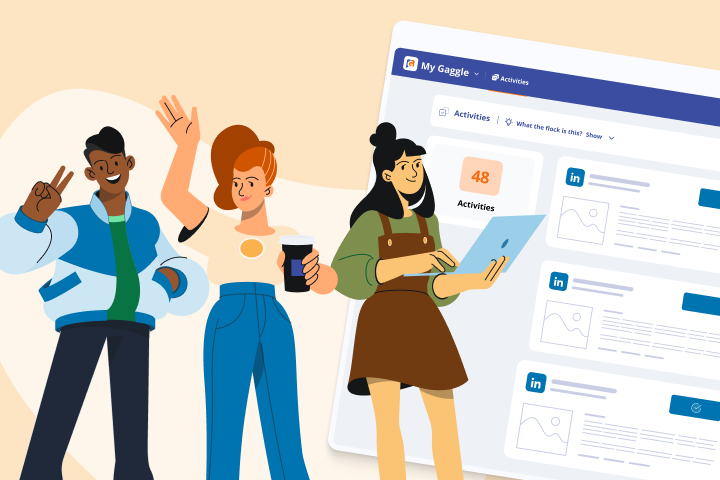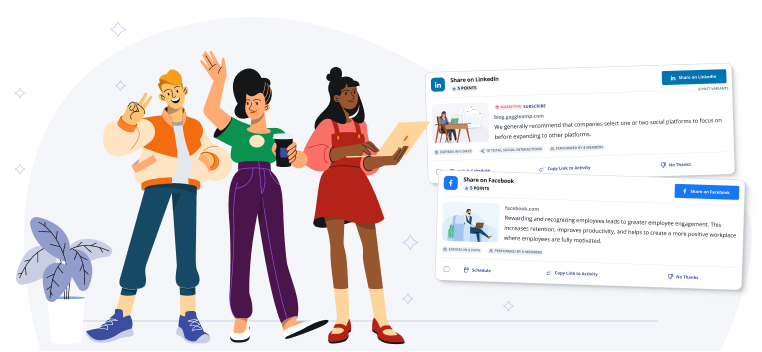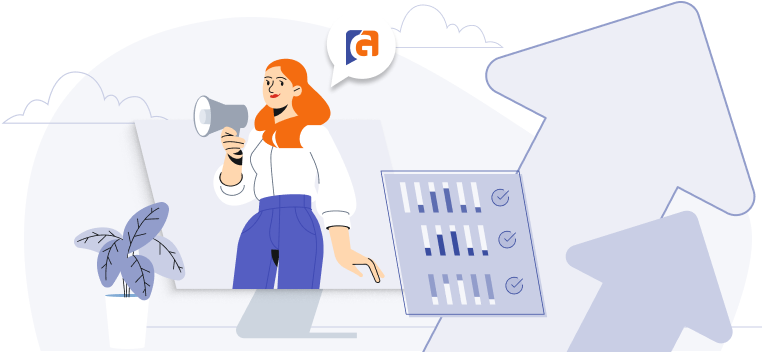10 Employer Branding Examples on LinkedIn To Inspire You
You’re probably already doing the basic employer branding best practices, like posting about company culture, promoting workplace awards, and promoting significant company achievements.
Following all of these best practices is certainly a good start, but all of your competitors are also performing these employer branding activities.
If you want to really stand out, you need a more effective employer branding strategy that shows how your brand is different and a more desirable workplace than your competitors.
To inspire your employer branding strategy, we’re sharing some outstanding employer branding examples on LinkedIn that go above and beyond the basic employer branding best practices.
Employer Branding on LinkedIn
Employer branding on LinkedIn helps brands establish themselves as industry leaders plus attract and retain talent.
Employer branding can also impact customers' perception of the brand. Customers are more likely to have a favorable opinion of your brand if employees speak highly of the company and it's evident from the brand's social media content that it truly values its employees.
What Is Employer Branding in Recruitment?
Employer branding in recruitment is content designed to positively influence the perception talent has of your brand. Therefore, excellent employer branding can help you attract top talent and reduce general talent acquisition costs.
As employee talent is a significant variable that impacts a company's success, it's hard to overstate the importance of employer branding.
To help you improve your employer branding efforts, we'll give you a list of excellent employer branding examples for LinkedIn later in this post.
How To Improve Employer Branding
Some of the most common methods used to improve employer branding on LinkedIn include:
- Employee Advocacy: Asking employees to engage with company content and create their own content about the brand.
- Promoting Awards: Showcasing different workplace awards the brand won that demonstrate it values its employees.
- Employee Spotlights: Highlighting specific employees each month and their achievements. This shows that the brand appreciates its employees, and candidates are more likely to want to apply if they see that the employees working at the company are top candidates.
- Promoting Industry Recognition and Awards: Publishing content about major accomplishments the brand and/or its executives recently achieved.
- Discussing Company Culture and Values: Posting about recent company off-sites, culture, and values also helps attract talent.
Below, we'll discuss some specific employer branding examples on LinkedIn.
Employer Branding on LinkedIn Examples
Here are some examples of outstanding employer branding best practices in action to inspire your future employer branding initiatives.
Example #1: ClickUp
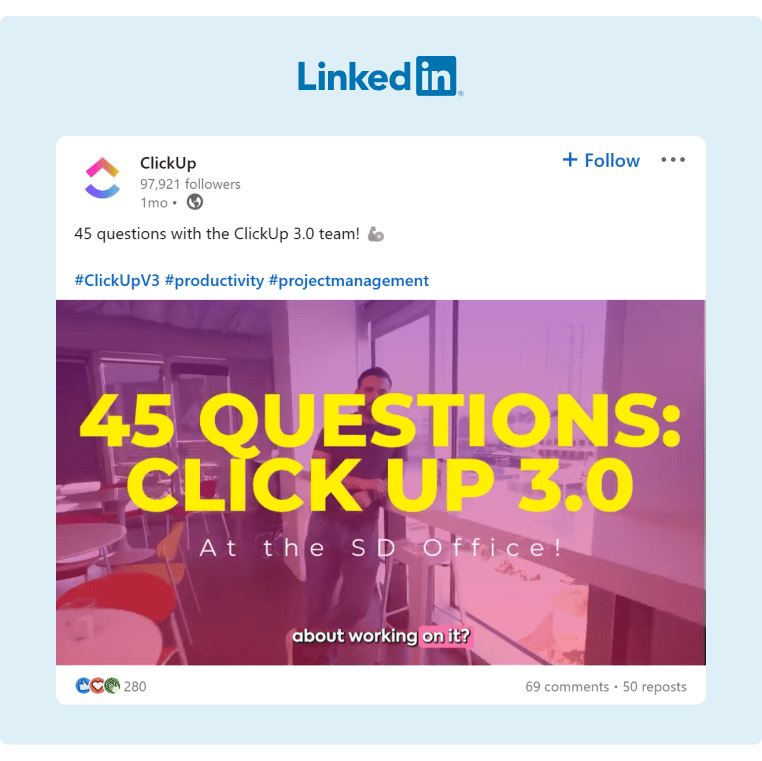
Source: ClickUp
ClickUp has some of the best employer branding examples on LinkedIn, and this post by their team is no different.
The video is a compilation of 45 questions they asked employees who built the 3.0 version of their product. In the video, the employees explain why they built the feature and how they use it internally.
The video itself is fun and engaging, showing off the opportunities employees have at ClickUp.
This makes it not only a great video for customers and prospects to understand the value of the tool, but it also shows how ClickUp is a market leader in project management, which also helps elevate ClickUp's employer branding.
ClickUp also frequently re-shares customer testimonials and shares cultural posts, like their Core Values awards program winners.
Example #2: Asana
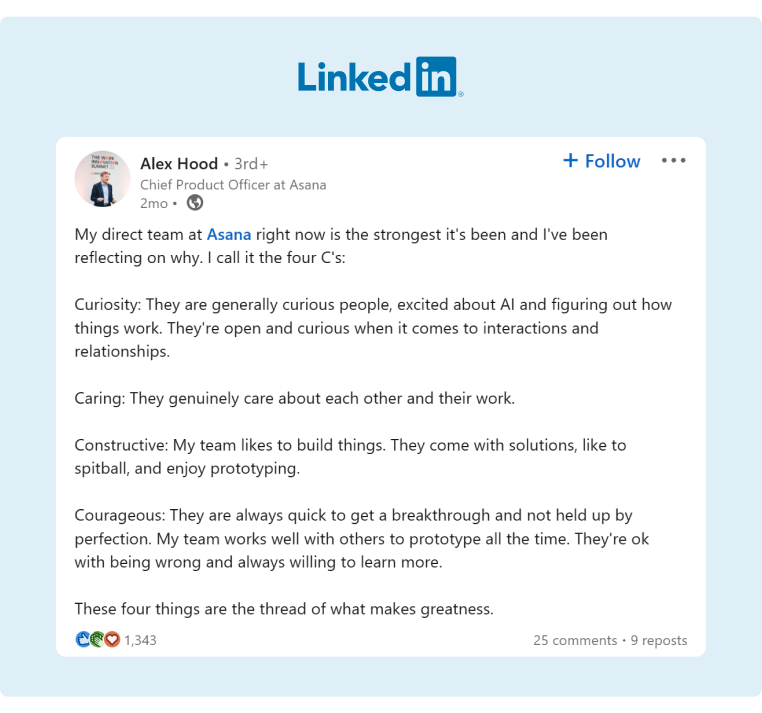
Source: Alex Hood
Asana is another project management tool with excellent employer branding on social media.
Their main employer branding strategy is employee advocacy, specifically, advocacy from executives. If you scroll through Asana's LinkedIn page, you'll see that they frequently reshare posts from executives on the main company page.
Employees also frequently jump into the comments to support executive content, further boosting the post's reach and ultimately increasing Asana's brand awareness. In addition, elevating the personal brands of Asana executives is helpful for employer branding, as top talent typically wants to work with industry leaders.
Example #3: Notion
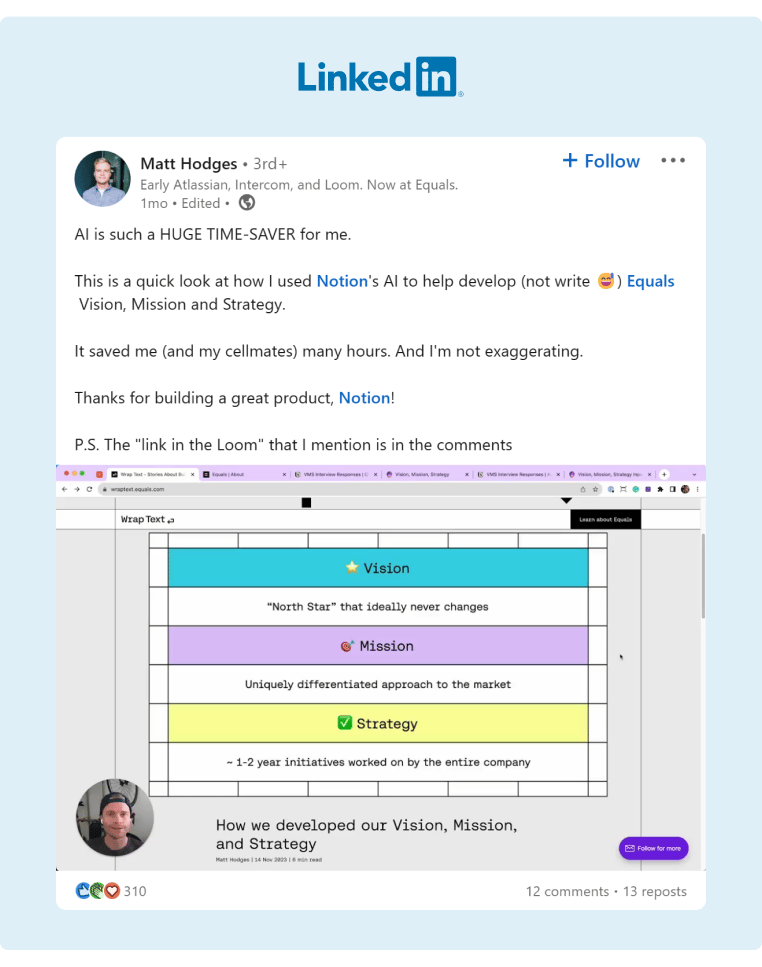
Source: Matt Hodges
Notion frequently reshares customer testimonials and user-generated content, which is excellent for employer branding as people want to work for companies that customers love.
Testimonials from third parties are also much more credible than branded promotion, so sharing these helps Notion boost its employer brand.
You can use a social media listening tool and set alerts whenever someone mentions your brand to easily reshare it on the company page.
Example #4: Acquisition.com
Acquisition.com, the holding company run by Alex and Leila Hormozi, is one of the most effective examples of employer branding on social media. In fact, its founders stated in previous videos that one of the main reasons they invest so much in content is because it's their top talent acquisition channel.
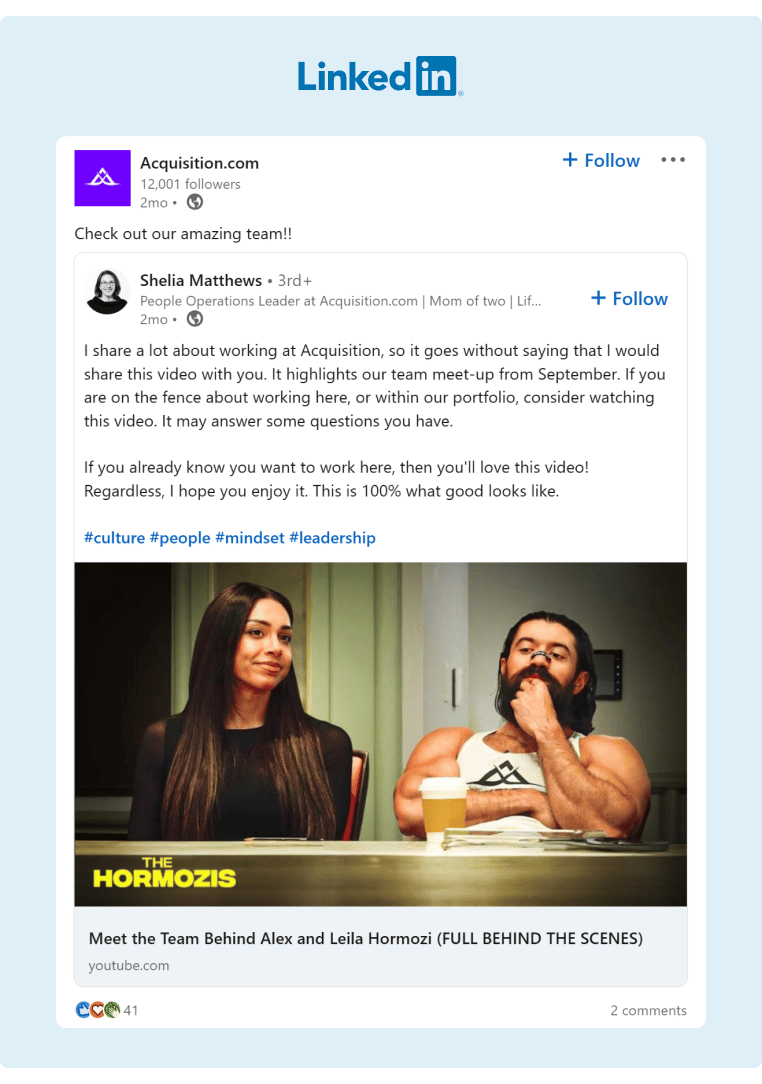
Source: Acquisition.com
Acqusition.com’s LinkedIn company page frequently reshares not only the content that Alex and Leila publish but also the content their executives frequently publish about working at Acquisition.com.
Like many other companies on this list, one of their top employer branding strategies is employee advocacy and resharing executive content.
If you're struggling to get your employees and executives to engage, consider using an employee advocacy tool like GaggleAMP that allows you to assign specific employee engagement activities and even provide pre-written posts for them to publish.
Example #5: Babbel
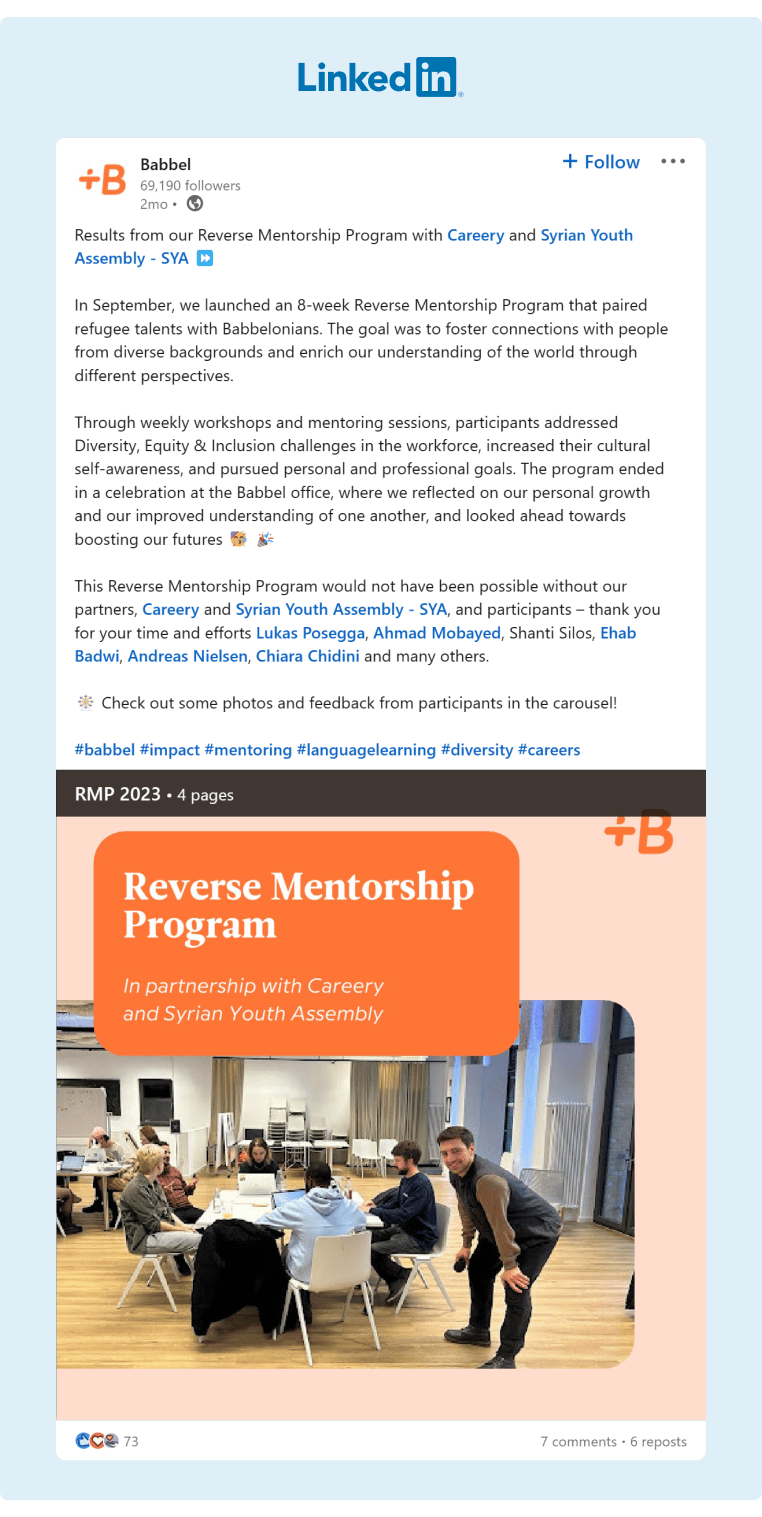
Source: Babbel
Top employees have plenty of options when choosing where they want to work, and a company's mission and impact are top considerations for many potential candidates.
This post by Babbel is an excellent example of how you can show off your community support efforts.
You can also see that Babbel did this effort in collaboration with Careery and the Syrian Youth Assembly. Doing partnerships with other brands can help further amplify reach, as you can tag those partners in your post. They’re also likely to promote the collaboration with their audiences, giving your brand more positive reach.
Example #6: Busuu
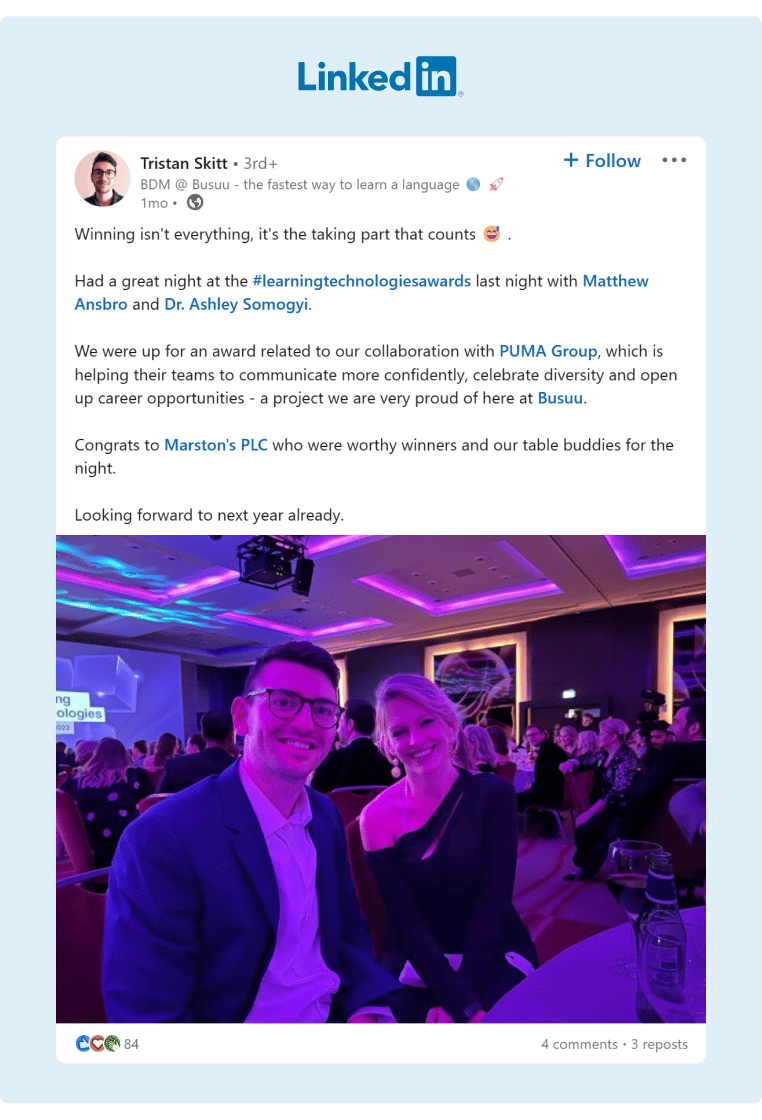
Source: Tristan Skitt
Busuu also relies heavily on employee advocacy, and this post that the company page reshared from an executive's page is a great example.
First, the post that the executive wrote was tactful. The executive promoted the brand by showing that it was nominated for an award and then congratulated the brand that ultimately won the award.
By congratulating the other brand, this post gives potential candidates and customers an inside look at the company's culture, values, and the character of its employees. It also shows some of the work that the brand has participated in and its community impact.
The takeaway is to encourage your employees, and especially executives, to discuss company projects that they're proud of and then reshare them on the company's main page.
Example #7: Semrush
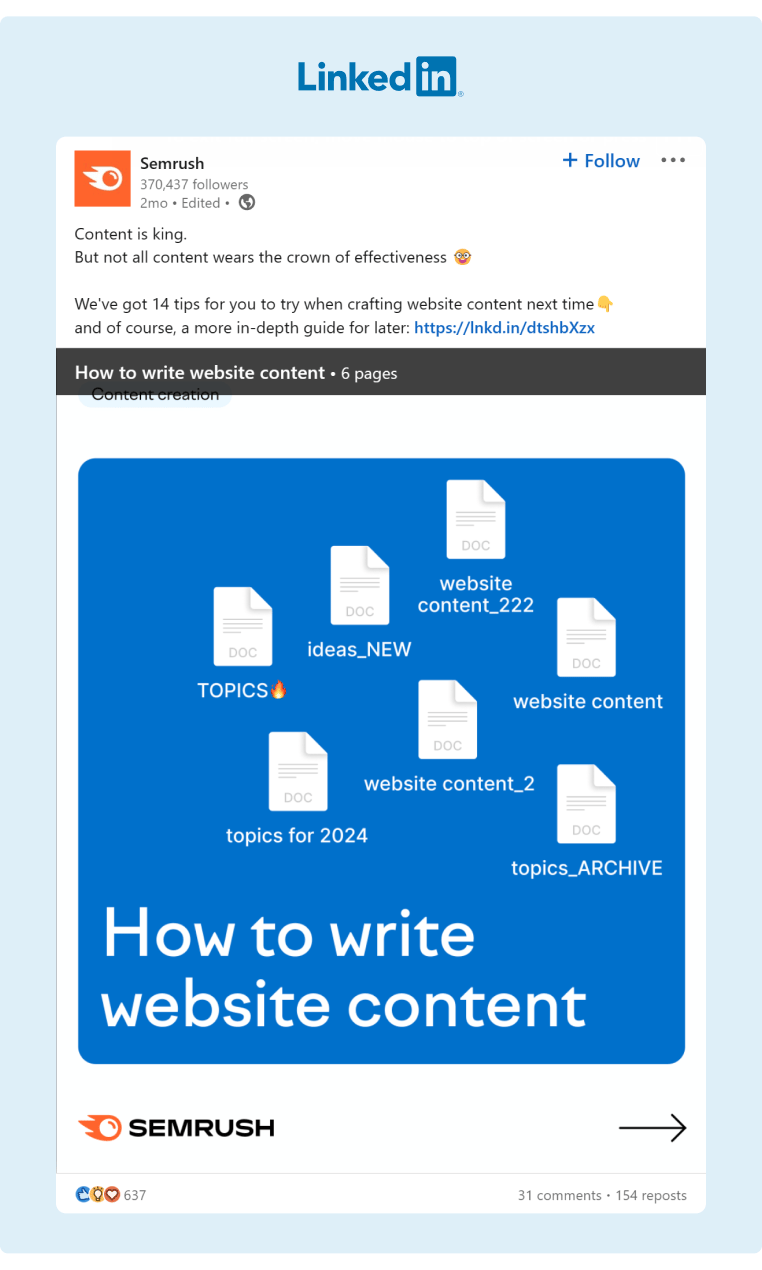
Source: Semrush
Over the past several years, Semrush has built a highly engaged LinkedIn audience, which has helped it attract top SEO talent. Their main strategy is publishing valuable content and memes to generate high engagement.
Judging by the positive comments, it clearly helps Semrush establish itself as an industry authority:

Source: Semrush
In addition to creating content centered around your employees, culture, and awards, it's important to also create actionable and helpful content that shows your brand is a clear leader in the industry.
Posting occasional memes with jokes tailored to your industry is also a great strategy to earn more brand awareness, which can ultimately also aid your employer branding efforts. But, only do so if it will resonate with your target audience.
Example #8: Snackpass
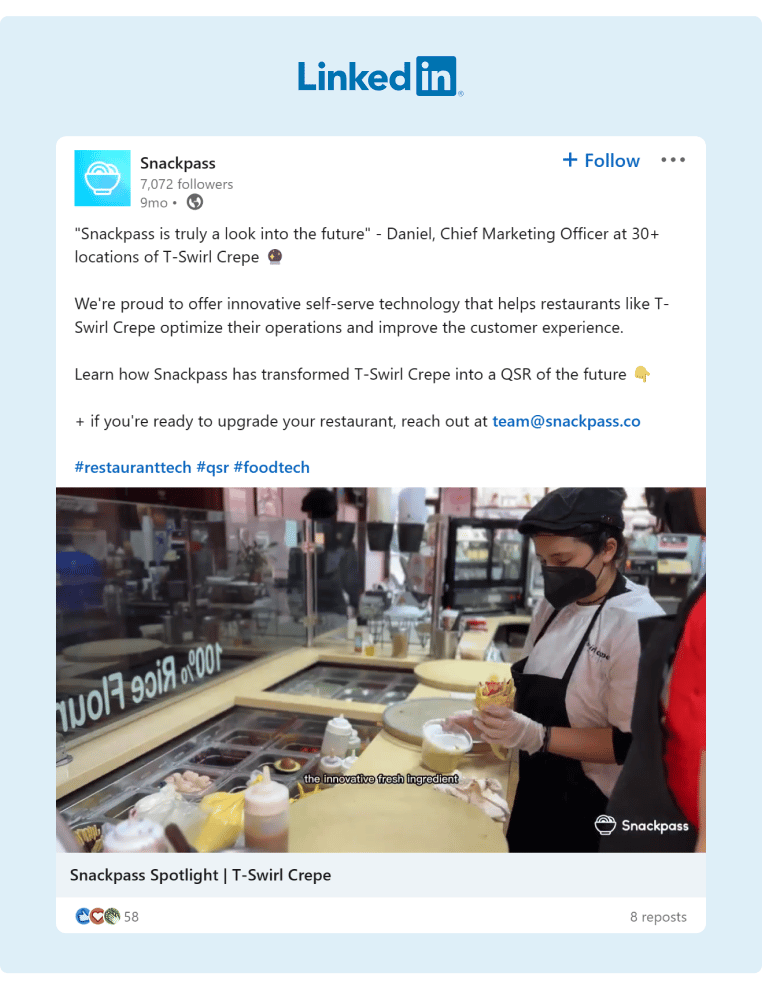
Source: Snackpass
Sharing a customer testimonial quote is a great start. But, if you want to really stand out, ask your customers if they’ll create a testimonial video that shows how your product helps them in their daily work.
This video from Snackpass is a great example of how you can create an outstanding customer testimonial. It’s also well-designed for social media employer branding, as it gives the viewer a behind-the-scenes look at the restaurant, which is fun and engaging.
Example #9: Sleek
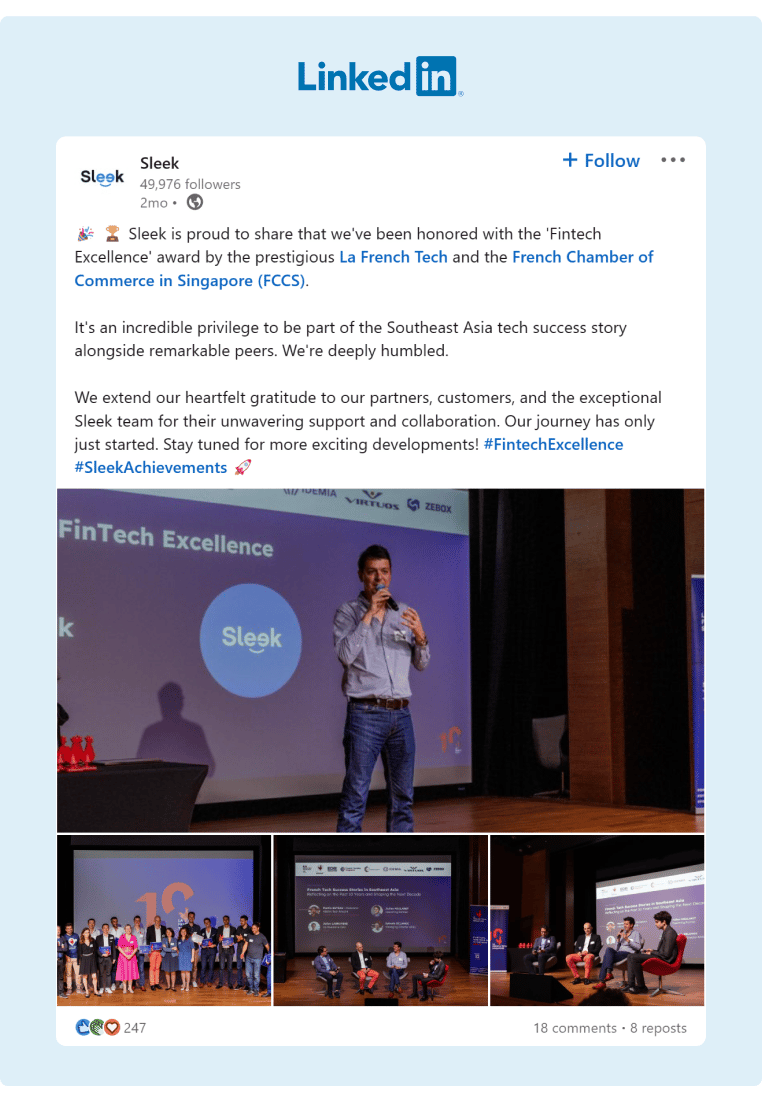
Source: Sleek
One of the easiest ways to boost your employer branding efforts is simply promoting your awards and achievements. Sleek is excellent at this strategy and frequently posts about events that their team attends and its engagement with the industry.
They also always add pictures of their team to make the posts more engaging.
Example #10: Kindbody
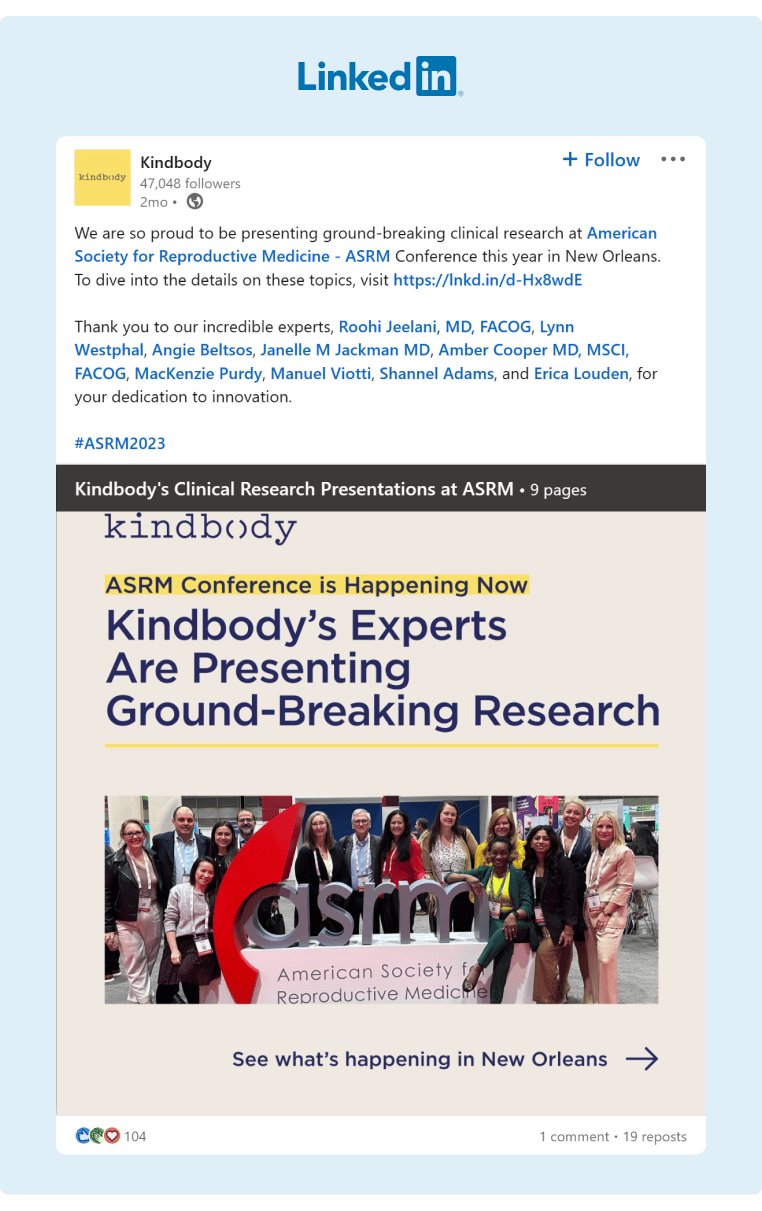
Source: Kindbody
Kindbody is a great example of using thought leadership content to aid your employer branding efforts. They recently performed a research study with various industry experts and announced it at an industry conference.
To promote it on LinkedIn, they created a carousel post highlighting the different experts who assisted with the research and tagged them in the post.
Including other industry experts in the post gives Kindbody more credibility. In addition, those experts shared the content which helped the content earn more brand awareness.
This is also excellent for employer branding as it shows that the company is at the forefront of researching innovative solutions to critical health problems.
Start Your Employer Branding Strategy Now
Hopefully this post gave you some ideas to inspire your employer branding strategy. If you still need help, we have a separate resource on crafting a top-performing employer branding strategy.
You’ll also notice that many of the examples of employer branding incorporate employee advocacy. Employee advocacy is a powerful strategy to improve employer branding, though keeping employees engaged can be challenging.
After all, your employees are busy and it’s time-consuming for them to sit down and think of insightful content ideas related to your brand to share on social media. To solve this problem, we created GaggleAMP. It allows you to not only assign specific engagement activities to employees, but also instantly generate pre-written posts for them with our AI tools, and tracks the posts’ engagement.
GaggleAMP also makes it easy for you to manage an employee advocacy program, as you can assign specific engagement activities to ensure important initiatives get promoted and track employee participation.
To see for yourself how GaggleAMP can help you achieve your employee advocacy goals, schedule a demo today!






